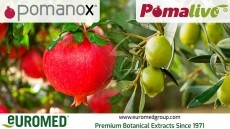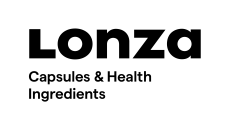World Food Day
Nutracea tackles hunger with rice bran
fighting world hunger by getting nutritious meal replacements to
children through feeding programs. Given the 800 million hungry
people in the world, this is no small feat.
Since it was founded in 2000, the California-based company's ingredients have been served as part of feeding programs in Latin America and the Caribbean. But at the same time it is expanding into the market for food programs in developing countries it is looking to get access to unused federal funding for school meals for American children who go to school hungry.
The company has been knocking on doors throughout the world slowly trying to get the word out about what it can offer programs funded by both government, charities and non-governmental organizations.
Half of the world's malnourished, that is to say 400 million, are children, according to the United Nation's World Food Programme (WFP). Chronic hunger impedes the physical and mental growth of children as well as makes them most vulnerable to diseases such as measles or dysentery. According to the Food & Agriculture Organization of the United Nations, five million children die as a result of hunger every year.
Beyond sheer human tragedy, the effects of child hunger can reduce the gross national product of developing countries by two to four percent - says the WFP - thereby further hampering a country's chances of getting out of the poverty cycle.
Nutracea has found a niche for bridging both humanitarian and business interests.
"We go into these countries and tell them they can get food security," Nutracea senior vice president Margie Adelman told NutraIngredients-USA.com. "Everyone makes money, but people are also getting fed."
Adelman said that as circumstances differ widely across each country and community, NutraCea can come up with a tailored solution for each case.
So far, the company's ingredients are served as part of food programs in Guatemala, the Dominican Republic, Jamaica, Trinidad, Barbados, Ecuador, Colombia, Nicaragua and Costa Rica.
The publicly-listed company takes the nutrient-rich rice bran and rice germ that are usually discarded in the traditional rice milling process to make its ingredients.
Nutracea's proprietary stabilized rice bran contains a variety of nutrients, including: more than 120 antioxidants, a variety of vitamins, omega-3 and omega-6 fatty acids, minerals and trace minerals such as potassium, magnesium, manganese and phosphorus.
The company's Nutrasolve is an example of a prepackaged high nutrition meal replacement. The high calorie bar requires no potable water and has a shelf life of up to one year.
"They could probably survive on this for a long time," said Adelman of giving Nutrasolve to people during food shortages. "It's one thing to fill their bellies, it's another thing to give them the micro and macro nutrients they need."
As part of a program sponsored by the United States Department of Agriculture (USDA) and the Christian Children's Fund in Guatemala, 67,000 pre-school children were given one proprietary Nutracea RiceAde drink each school day for ten months.
Prior to the program, Nutracea says 37 percent of randomly selected children were suffering from stages one or two of malnutrition. Within 90 days on the program, 50 percent regained healthy weight levels, none were classified as stage two malnutrition and only 5 percent were still in stage one.
Adelman said Nutracea is currently in negotiations with international humanitarian relief organization Doctors Without Borders for the possibility of distributing its Nutrasolve bars.
Nutracea is also looking to get involved with feeding programs in their own backyard.
According to USDA data, 11.9 percent of US households were 'food insecure' in 2004, meaning that at some point during the year they were uncertain of having enough food to meet their needs because they did not have enough money.
In an effort to prevent child hunger, the federal government has sponsored a school lunch program in the US since 1946 and a school breakfast program since 1966. However, much of the breakfast funding schools are eligible to apply for has not left federal coffers.
Federal expenditures for the 2005 fiscal year on the national school breakfast program were $1.9bn, compared to $7bn for the national school lunch program, says the Food Research and Action Center in Washington D.C.
"That's unbelievable," said Adelman of the unused funds for school breakfast programs. "We intend to lobby for some of that money."










